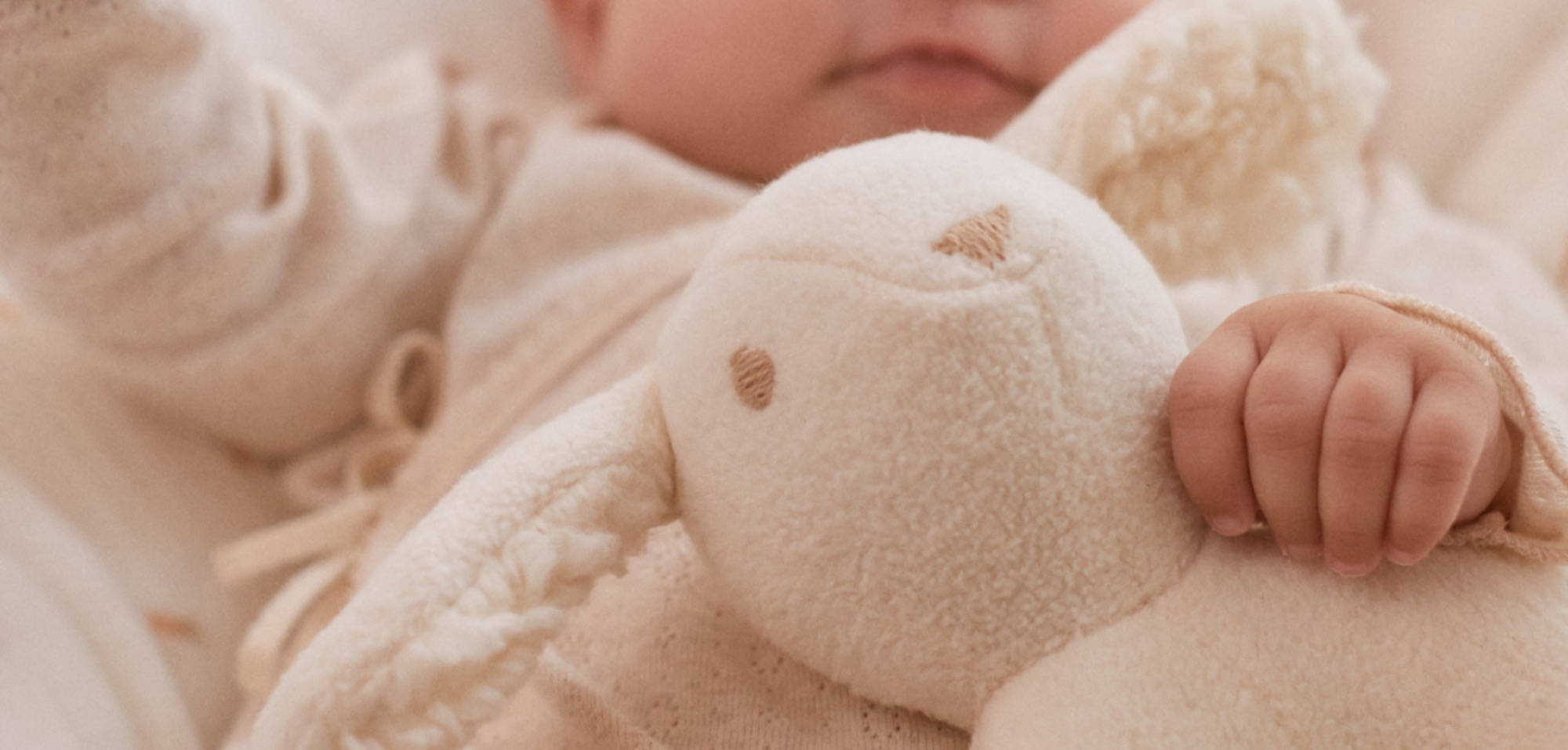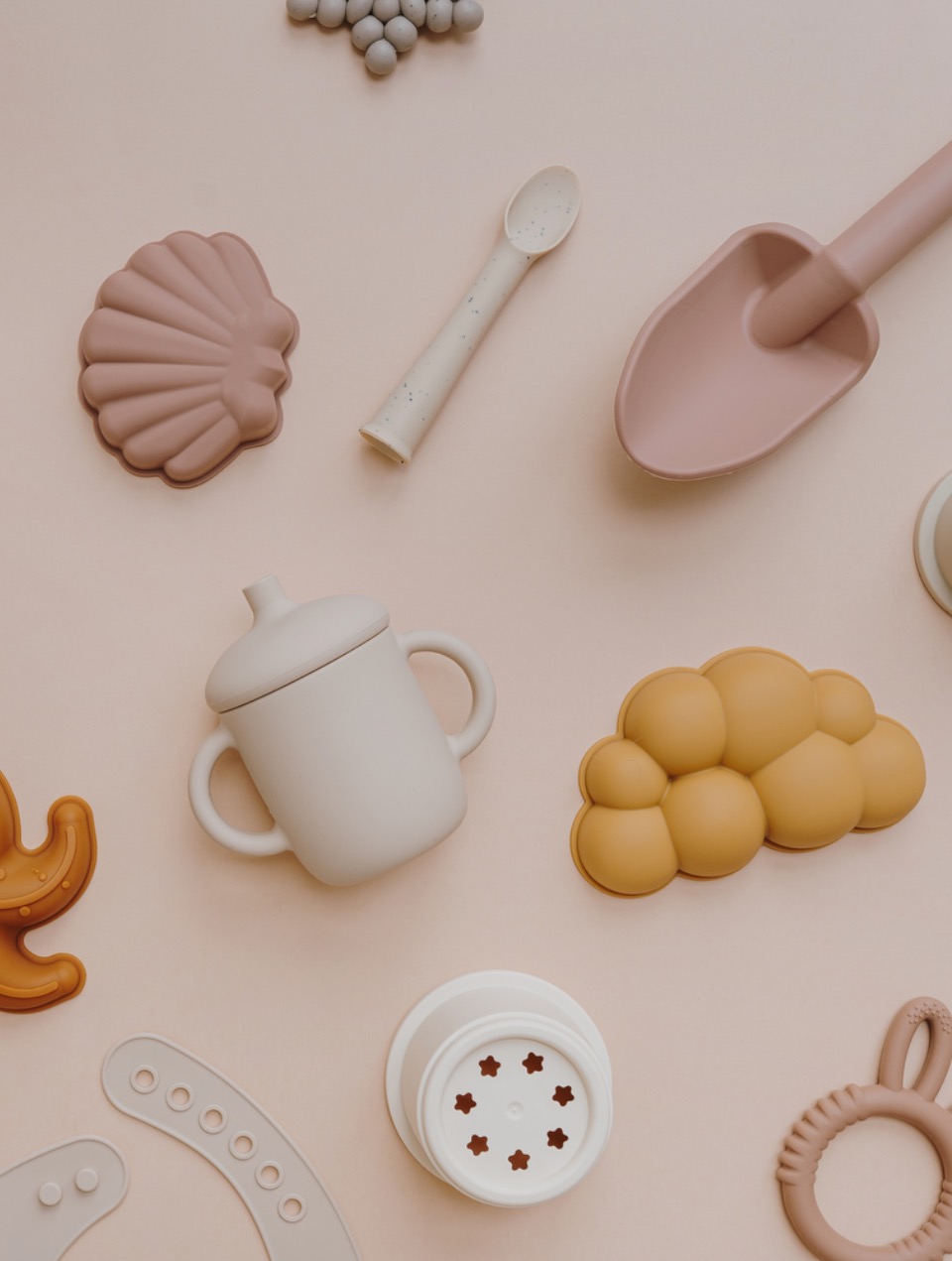
More than just entertainment, rattles and teethers for newborn and baby are essential for sensory development in the first months of life.
With varied textures and vibrant colours, rattles stimulate hearing and motor coordination, while teethers help strengthen the gums and relieve the discomfort caused by the eruption of the first teeth.
Let’s explore the benefits of rattles and teethers for newborn and baby, what to look for when purchasing them, and some important care tips.
Rattles and teethers for newborn and baby are often the first toys parents buy for their little ones. Though simple, rattles and teethers for newborn and baby offer several benefits and have a significant impact on their lives, becoming indispensable allies for parents and caregivers.
With sounds and vibrant colours, rattles stimulate auditory and visual senses, promote hand-eye coordination, and help develop fine and gross motor skills. By hearing the sound emitted when holding and shaking the rattle, the baby focuses attention, tends to calm down, and learns that their actions can cause a reaction - an important cognitive skill.
Teethers, on the other hand, are invaluable during one of the most challenging phases - teething. Providing a safe and comfortable surface for babies to bite on, teethers ease pain and soothe the gums. Made from safe, textured materials, teethers also support orofacial motor skills. By biting down for relief, babies strengthen their jaw and develop an appropriate bite - crucial oral motor skills necessary for eating and speaking.
There are three main groups of rattles and teethers for newborn and baby available on the market. Within each group, what sets them apart is the quality of materials and manufacturing. Let’s explore the most suitable materials for each group of rattles and teethers for newborn and baby.

Rattles and teethers for newborn and baby made from soft cotton are an excellent choice due to their gentle texture and safe materials. In these cases, organic cotton ensures they are free from harmful chemicals and pesticides. Organic cotton is not only soft and pleasant to the touch on the baby’s delicate skin but also safe, even if the baby puts it in their mouth.

Wooden teethers are another popular choice among rattles and teethers for newborn and baby, especially for parents seeking durable and natural options. At Owono Baby, our teethers are made from olive wood, a material known for its strength and smoothness, making them a sustainable choice.
Unlike plastic ones, wooden teethers are free from toxic chemicals, making them a safer option for babies. The natural wood grain adds a unique aesthetic, while its durability ensures it can withstand the toughest stages of teething.

While natural materials like cotton and wood are ideal for newborns, silicone rattles and teethers for newborn and baby also have their value. Particularly easy to clean, these rattles and teethers for newborn and baby are durable and resistant to daily use. Since they can be put in the dishwasher, they make cleaning and sterilisation simple. If you opt for this version, ensure that the silicone is food-grade, free from BPA, PVC, and other harmful substances.
Choosing the best rattles and teethers for newborn and baby can be a challenging task, given the variety of options available on the market. To ensure the baby’s safety and comfort, it’s essential to evaluate all aspects. Listening to your paediatrician’s advice is always a good option, offering reassurance to parents. Nevertheless, here are some basic considerations for selecting rattles and teethers for newborn and baby.
Safety should be the top priority. In this regard, there are three essential factors when choosing rattles and teethers for newborn and baby:
In addition to safety, rattles and teethers for newborn and baby should also be optimised for functionality and development:
As we’ve seen, introducing rattles and teethers for newborn and baby into daily routines is important for promoting sensory and oral development. But how should they be “introduced” to newborns to ensure they adapt well and enjoy them fully? Let’s explore some possibilities:
For the first introduction, place rattles and teethers for newborn and baby near the baby while they play or feed and let them explore with their hands and mouth. If necessary, show the baby how to hold and shake the rattle or how to bite the teether, as babies learn a lot by observing their parents.
Playtime and comfort moments are ideal opportunities to introduce rattles and teethers for newborn and baby. Take advantage of these daily moments when you play with the baby to use the rattle. Shake it gently to catch the baby’s attention and move it in different directions to encourage the baby to follow the sound. Then, place the rattle in the baby’s hand to observe their reaction. The teether can be used during times of discomfort, especially when the gums are more sensitive, such as after feeding or before sleep.
Whenever the baby interacts with rattles and teethers for newborn and baby, offer praise and show affection. This will help the baby associate the experience with positive feelings.
To prevent the baby from becoming bored and losing interest in rattles and teethers for newborn and baby, it’s important to keep them engaging. How? Here are some tricks:
In conclusion, choosing the right rattles and teethers for newborn and baby can be a real help in navigating the early months of a child’s life. With so many natural and eco-friendly options available, it’s possible to find rattles and teethers for newborn and baby that care for both the baby’s well-being and the planet.
Finally, remember that every baby is unique, so try different types and materials until you find the rattles and teethers for newborn and baby that your little one enjoys the most. After all, the most important thing is that they feel happy and comfortable!